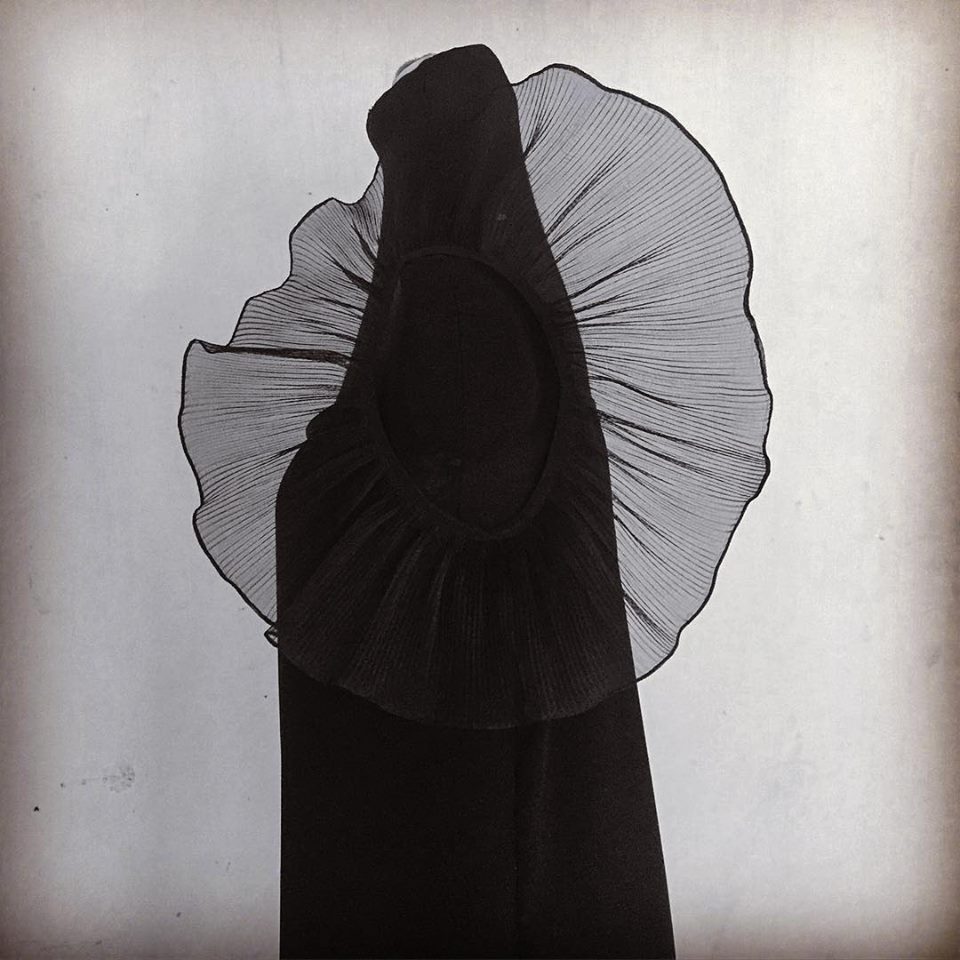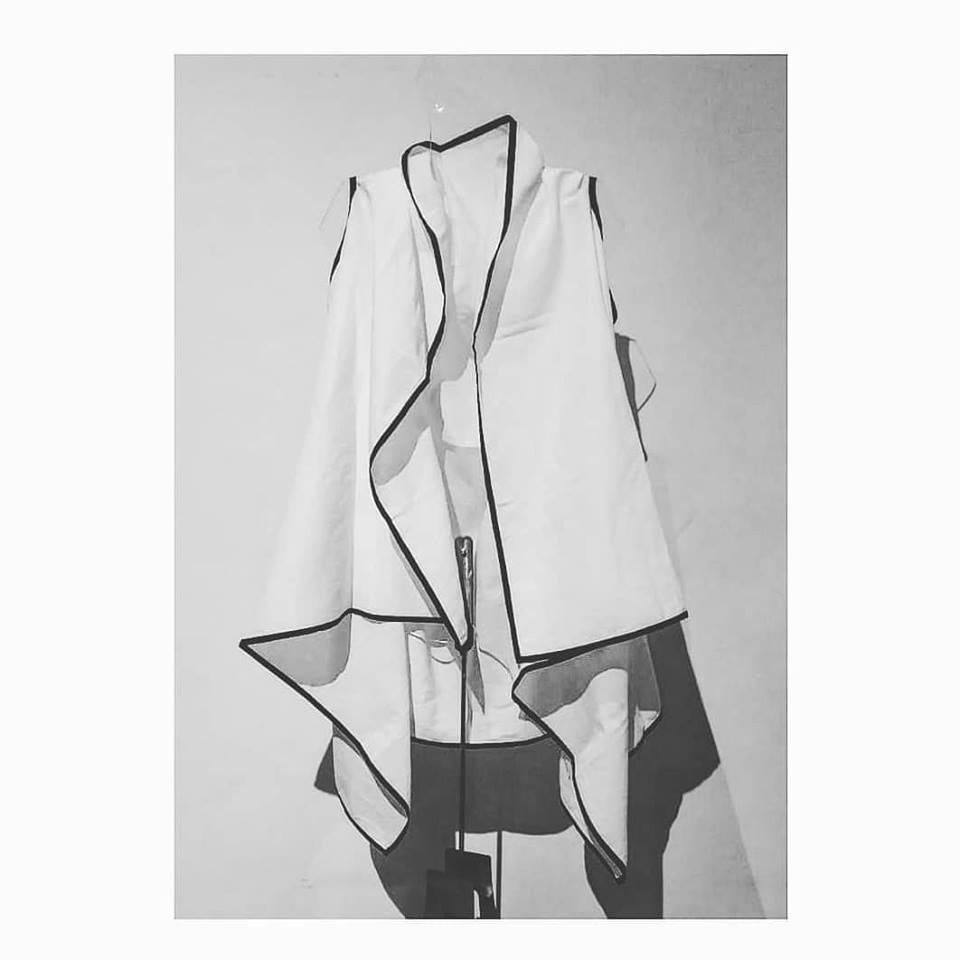Interview by Selma Carvalho
Schulen Fernandes is the head creative designer for Wendell Rodricks Collections. Here, in conversation with Selma Carvalho, she discusses what informs her artistic inspiration, and the challenges of working in the fashion industry.
SC: Tell us a little about your childhood, where you grew up, and what or who were your early influences?
SF: I was born and raised for most part of my childhood in South Mumbai. I had my brother and cousins for company and I remember my childhood as nothing but fun. We lived in a predominantly Catholic and Parsi community, so the general ethos was essentially about living well and having a great time. I remember every birthday and every other occasion being an excuse for a celebration. In true Goan style, house parties with loads of people singing and dancing, great food and many merry drinks. The culture of Irani cafes, Sunday visits to Chowpatty beach or Colaba, the vibrant local street food made many special Mumbai memories. I do also fondly remember endless summer vacations in Goa bobbing from one home to another, spending time with my cousins and family where I was spoilt silly and grateful that could acquaint myself with my native culture, festivals, food and people.
Sports has been a great influence in my early years actually. There’s so much to take positively from it’s discipline and I especially loved tennis. Steffy Graf and Gabriella Sabatini, were influencers on my young impressionable mind. Their style and panache are unmatchable even in these times. I loved how refined Wimbledon fashion was.
SC: When did you first realise that you were artistically gifted?
SF: All artists are gifted from a really young age. I can’t exactly put it down to a number, but I naturally came into a creative life very early on. From random doodles and sketching or thoroughly enjoying drawing anatomical diagrams in biology, to hand crafting doll dresses from throw away tees, to wanting to design and style my own customised clothing, the signs just added up. Thankfully I had absolute clarity while I was in school about pursuing fashion and that’s held me in good stead, exploring different aspects of the business for the last 18 years. I started as a Designer, went on to be a Buyer and then a Stylist. These were great learning experiences but eventually I had to stay true to my artistic core and decided to return back to my first love, Design.
SC: You are of Goan lineage. Given the general Goan tendency to discourage careers in the creative field, were you determined from an early age to pursue a career in the creative industry? And what inspired you to follow fashion design?
SF: I’m grateful for a very supportive and liberal minded family. They never once suggested I reconsider my career decision or second guessed it. Even when I decided to pursue my work with Wendell and move to Goa at 20 years of age, they never resisted. Perhaps being familiar with my Goan roots helped and also the fact that I was absolutely clear with my decision from the onset.
On a not so serious note, I would have to give VHS tapes and cable TV some credit with nudging me over the line. I was a part of the MTV generation. Exposure to artists like Madonna, David Bowie, George Michael etc. and music videos like Vogue and Too Funky were such a cool visual fashion treat. Watching the Grammy’s and Oscar award ceremonies and of course not forgetting the TV series ‘The Bold and the Beautiful’. I was drawn to all things glamour, fun, vibrant and experimental that was fashion. I knew I was never going to settle for a dull day at the office.
Schulen Fernandes at work and some of her dramatic designs. Click on forward controls to see next image. All pictures are © Schulen Fernandes and cannot be reproduced without her permission.
SC: Designers are famously influenced by a ‘Muse’. What or who has influenced and informed your design concepts?
I am very drawn to architecture. I love structured, clean lines and dimensions that are beyond the ordinary . So at an early age I was inspired by the work of most Japanese designers. It’s exceptionally tough to take a fabric devoid of any embellishment or print and make it look stunning purely by its construction. That’s the challenge that’s inspiring and worth every minute spent in the design realm.
SC: Tell us a little bit about your association with Wendell Rodricks who became your mentor and eventually your boss.
SF: Wendell taught me the history of world costume in design school, that was my first interaction with him. It was by far the most interesting session and we would look forward to his visits. I absolutely loved his work from the time I became aware of it. When Indian fashion was mostly about embroidery and bling, here was someone pioneering the ‘less is more’ ideology. I decided to ditch the usual internship placement by the school management and mustered enough courage to speak to him directly and request to work under him at my graduating show (winning 6 awards certainly helped my confidence at 20 years young!). Thankfully he obliged and three months later I was in a sleepy little village in Colvale, pursuing my dream. The next three months were a beautiful bonus of learning and I was asked to stay on and eventually worked with him for the next four years as his design assistant. Those years were the most important formative years in my fashion career, the biggest learning curve for me, and Wendell was undoubtedly the best mentor. His originality, discipline, sincerity and hands on approach to design has been inspirational and most invaluable.
SC: Wendell Rodricks is doing well on the world stage, and a few Goan designers do well locally tending mostly to the bridal market. Are there challenges facing a ‘Goan’ designer at the national level?
SF: Not at all. There is a small crop of Goan designers who are building credible labels, unfortunately they are not all based in Goa. While Goa is an absolutely brilliant space to thrive creatively, the only challenge I find working out of here is the exposure to resources. Which is a huge disadvantage. That aside there is absolutely no excuse to not have a fashion presence at a national or global level, especially in these times when social media is such a phenomenal tool with it’s reach of a worldly audience. In my opinion though, the fundamental challenge facing designers and not just Goan designers is that of owning an identity.
SC: Despite there being a good number of female haute-couture designers on the world stage Stella McCartney, and historically Coco Chanel of course, creative art directors for large fashion houses are generally men. How easy has it been for you being a women in haute-couture and now Creative Head for Wendell Rodricks?
SF: Well as a percentage that might hold true, but there are a fair amount of female creative directors for international and more so Indian fashion houses. Nothing is easy like any other creative field, as it’s not formula driven. It takes a lot of hard work, conviction while experimenting and a fair few seasons of experience working with a label to truly understand it’s dynamics. Thankfully, I started my fashion career with the label so I’m very familiar with it’s design DNA. The challenge is to keep a twenty-five year old brand fresh and relevant to the times as well as acquiring a new generation of clientele. Every bit of design work done is progress towards that goal.
SC: Has there be a particular design or concept that you’ve been particularly proud of?
SF: I personally like my first collection, 'Trapezoid'. It was innovative and inclusive in many ways. We showed age-neutral, gender neutral and size-neutral clothing on real women using ancient forms of Indian geometric pattern cutting. These women were friends, family and achievers in their own rights and we featured them for who they were; regardless of their age, body types or sexual orientation. It was an interesting collection that was not just about fashion but challenged the norms while celebrating these women and their relevance beyond the glamour of fashion. We addressed another very important issue of owning a standard woman’s sizing chart for India specific to Indian women. Most designer’s, e-retail portals and high street fashion labels follow an international size chart like UK, US, EU, JP etc. The Indian subcontinent has a very distinct body type, usually a hip heavy Pear shape or a top and midriff heavy Apple shape and more. With our experience of dressing millions of women over the years at the WR fashion house we have created and published this size chart that can be referenced by anyone.
SC: What next for Schulen Fernandes?
SF: The plan is to take the Schulen Fernandes for Wendell Rodricks brand into new territory. Re-invent the original blue print to acquire a newer younger customer and explore further creative possibilities within the fashion retail business. Early next year, I look forward to launching the label in a different avatar. There is also an eco-sensitive project for Goa that I feel passionately for and also look forward to bringing refined fashion experiences to Goan shores..
Thank you for agreeing to be interviewed by the Joao Roque Literary Journal.
Banner picture features Schulen Fernandes. You can follow her on Twitter or Facebook.




